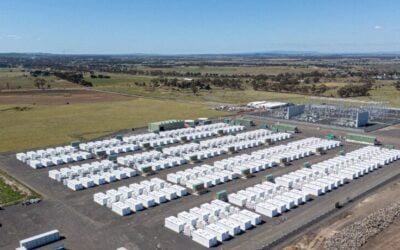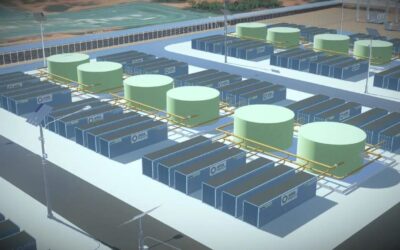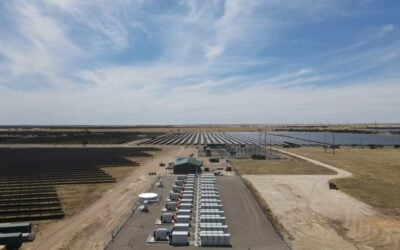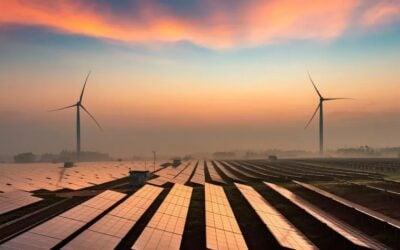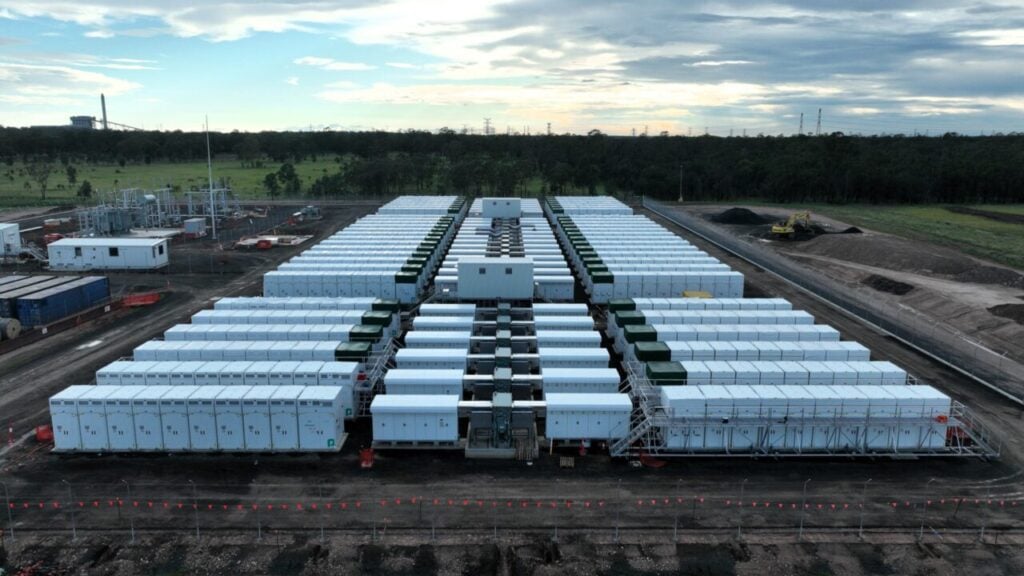
The Australian Energy Market Operator (AEMO) has reported a record 56.6GW of new generation and storage capacity in the National Electricity Market (NEM) development pipeline, with energy storage projects comprising almost half of the total figure at 26.1GW.
AEMO’s latest Connections Scorecard shows the development pipeline has expanded to 275 projects, representing approximately 82% of the NEM’s existing generation capacity and marking a 24% increase in new capacity year-on-year.
The data reveals a fundamental shift in Australia’s electricity system as ageing coal-fired generators are replaced by renewable energy and storage infrastructure.
Battery storage capacity in the pipeline increased 79% year-on-year from 14.6GW, with the vast majority of new pipeline capacity consisting of 18.2GW in grid-forming batteries.
Try Premium for just $1
- Full premium access for the first month at only $1
- Converts to an annual rate after 30 days unless cancelled
- Cancel anytime during the trial period
Premium Benefits
- Expert industry analysis and interviews
- Digital access to PV Tech Power journal
- Exclusive event discounts
Or get the full Premium subscription right away
Or continue reading this article for free
AEMO also noted an uptick in hybrid projects combining solar with battery storage, which jumped from 7% to 17% of the connections pipeline over the past 12 months.
“The pipeline showcases the NEM’s shift from a baseload and peaking power system to one that’s built on renewables and firming,” said AEMO onboarding and connections group manager Margarida Pimentel.
“Grid-scale batteries make up about half of all new capacity in the investment pipeline.”
The AEMO pipeline data encompasses projects classified as existing, in commissioning, committed, and anticipated. Committed projects are required to meet five specific criteria, while anticipated projects show progress toward at least three criteria.
In the 2024-25 period, 4.4GW of new capacity was commissioned in the NEM, representing a record level in a single year since the market’s establishment.
Recent federal government initiatives have supported the storage development pipeline, with the last two Capacity Investment Scheme tenders awarding revenue underwriting agreements to 28 battery projects totalling 7.6GW and 28GWh of battery storage capacity.
These agreements provide revenue certainty for developers and have contributed to the substantial pipeline of storage projects now progressing through AEMO’s connection process.
The transformation of Australia’s electricity system continues as renewable energy and storage projects advance through development phases. AEMO’s latest data confirms energy storage’s central role in the country’s energy transition and grid modernisation efforts.
Australia’s grid-scale energy storage sector continues to expand
The record development figures align with state-level initiatives across Australia to secure long-duration energy storage capacity. South Australia has launched its inaugural Firm Energy Reliability Mechanism (FERM) tender, seeking up to 700MW of long-duration energy storage and firm generation capacity.
The tender, administered by ASL (formerly AEMO Services), represents the first implementation of South Australia’s new capacity mechanism designed to strengthen reliability in one of the world’s most renewables-dominant power systems.
The FERM tender requires facilities to be at least 30MW and capable of sustaining maximum output for eight continuous hours, naturally pointing toward technologies such as grid-scale batteries and flexible gas plants.
South Australia currently sources 75% of its annual electricity demand from wind and solar alone and aims to reach 100% net renewables by the end of 2027. The tender will target 700MW of new capacity, with 400MW to be delivered by late 2028, 200MW by late 2029, and 100MW by 2031.
Australia’s energy storage expansion reflects broader global deployment trends, with worldwide grid-scale battery energy storage system deployments increasing 36% in the first nine months of 2025 compared to the same period in 2024.
State-level energy storage planning continues across the NEM, with Queensland’s updated energy roadmap targeting 4.3GW of short-duration energy storage by 2030 while revising pumped hydro development plans.
The Queensland government increased its short-duration storage target from 2GW to 4.3GW, acknowledging the technology’s cost competitiveness and faster deployment timelines compared to pumped hydro storage.
Queensland’s revised approach reflects broader recognition of battery energy storage systems’ ability to provide grid services, including frequency regulation, voltage support, and renewable energy firming.
The state has also reduced its pumped hydro storage target from 5GW to 2GW by 2035, citing extended development timelines and higher capital costs for large-scale pumped storage projects compared to battery alternatives.


